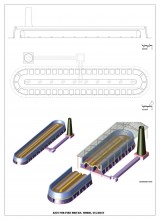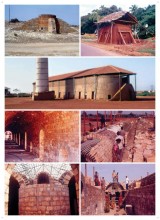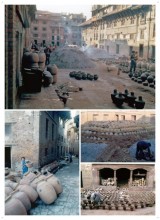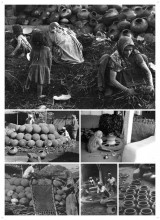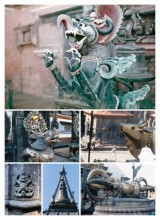Potters’ community, Ognaj, Gujarat; Thimi, Nepal; and Karnataka
Clay pots and clay utensils are most primitive objects of most civilizations, the processes in Nepal and India are similar, different regions of India have variations, pot making and baking are the two distinct activities, entire family participates in the making of pots, the gendered role playing is remarkable; raw clay is procured from village tanks at the end of the summer which in turn are deepened for catching more water in monsoon as a result of this activity.The ways of making pots are essentially the same, wheeling a cylinder first and then tapping the clay from outside with a taplo in one hand supported by a roundish support inside, the shape emerges as the clay expands; Dhochki, bhotvo, maantlun, mantle, lamps, flower-pots, haandli, kothi, kalaadi and even country tiles and bricks were traditionally made by the potters, a potter was honorably called Prajaapati (the keeper or the king of the people) or kumbhaar (kumbhkaar). Kilns have variations, the pots and the utensils have regional shapes responding to the needs, Thimi in Nepal is a potters’ village which gets dotted with freshly made and dried pots and then with a number of kilns, the whole village fires the pots like in the kumbharvaadaa(s) of Gujarat and Karnataka, the kilns are tended and allowed to sizzle the night over and are dismantled in the morning, pots, utensils and grain storage vats of different sizes and shapes everywhere, it is like celebrating one of the oldest crafts today. Africa had neither the potter’s wheel nor a loom which in fact tells on its coil pottery and certain weaves and width of fabric they make.

